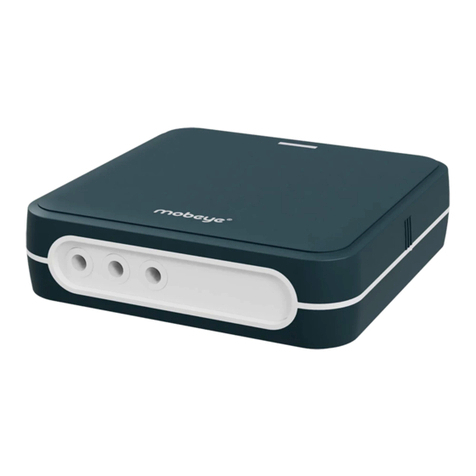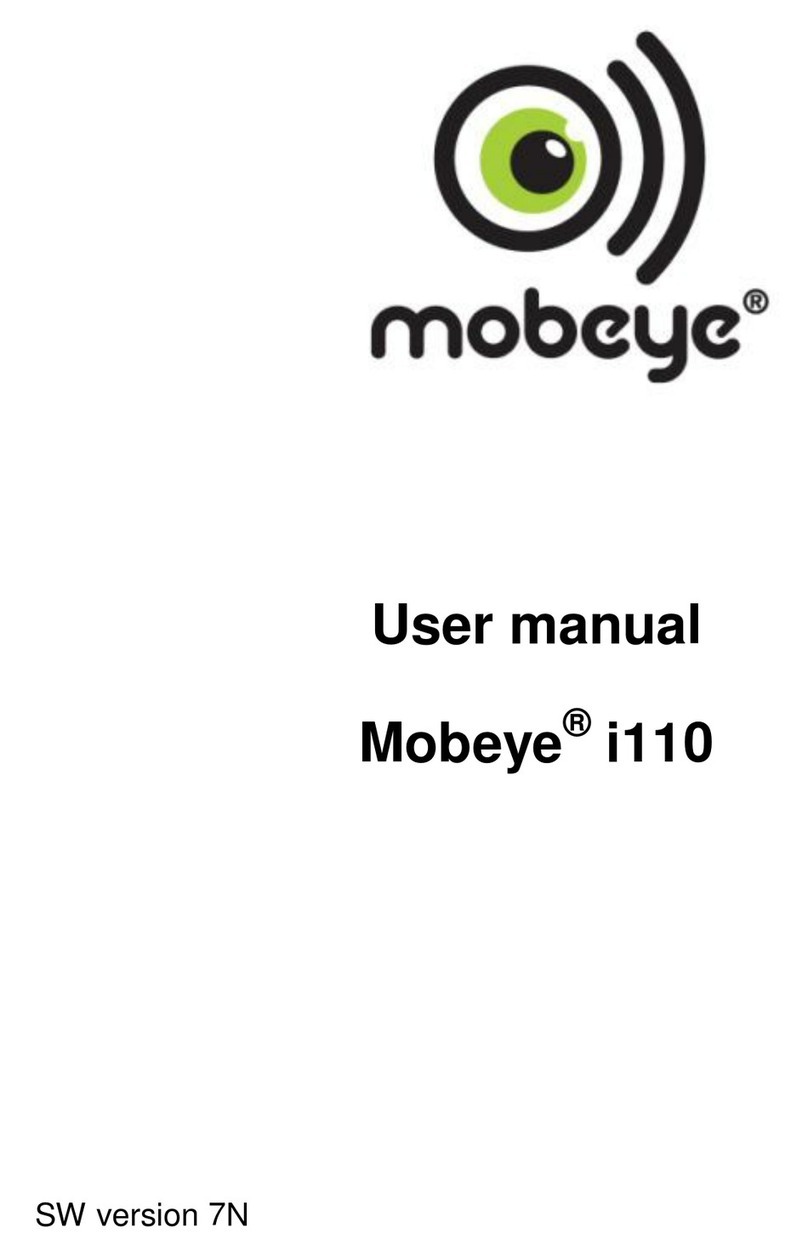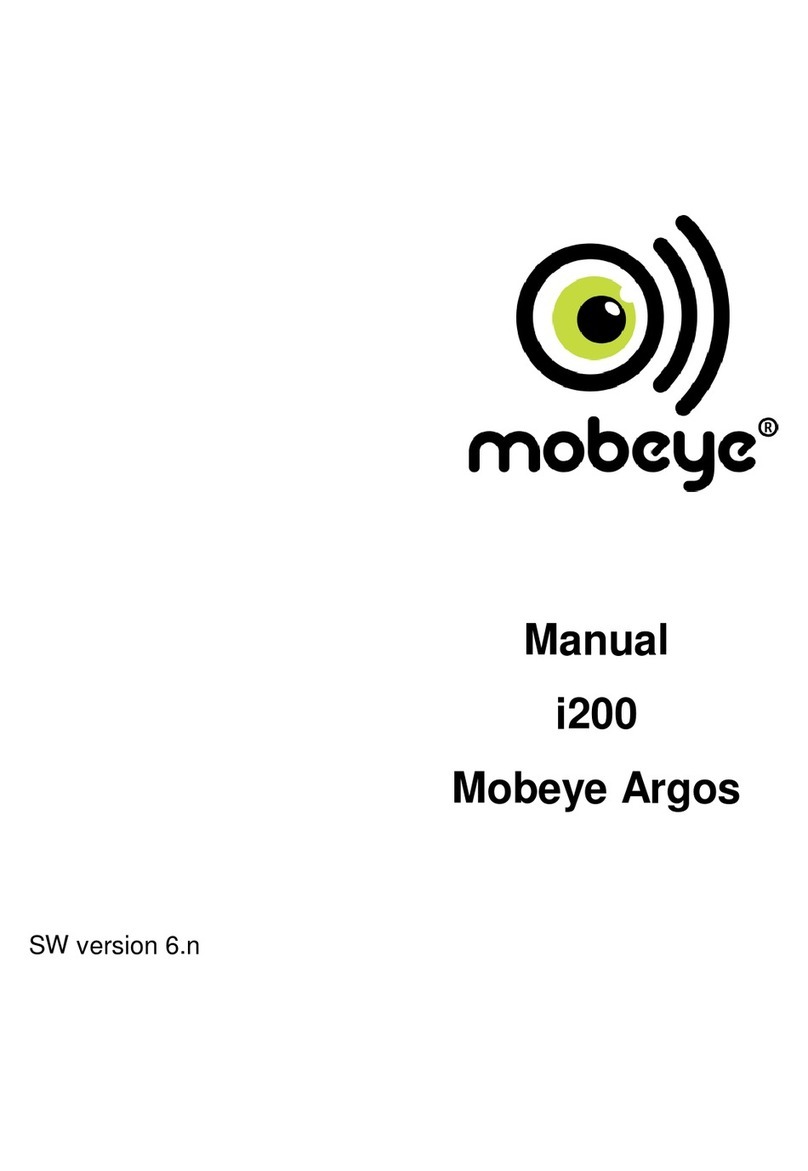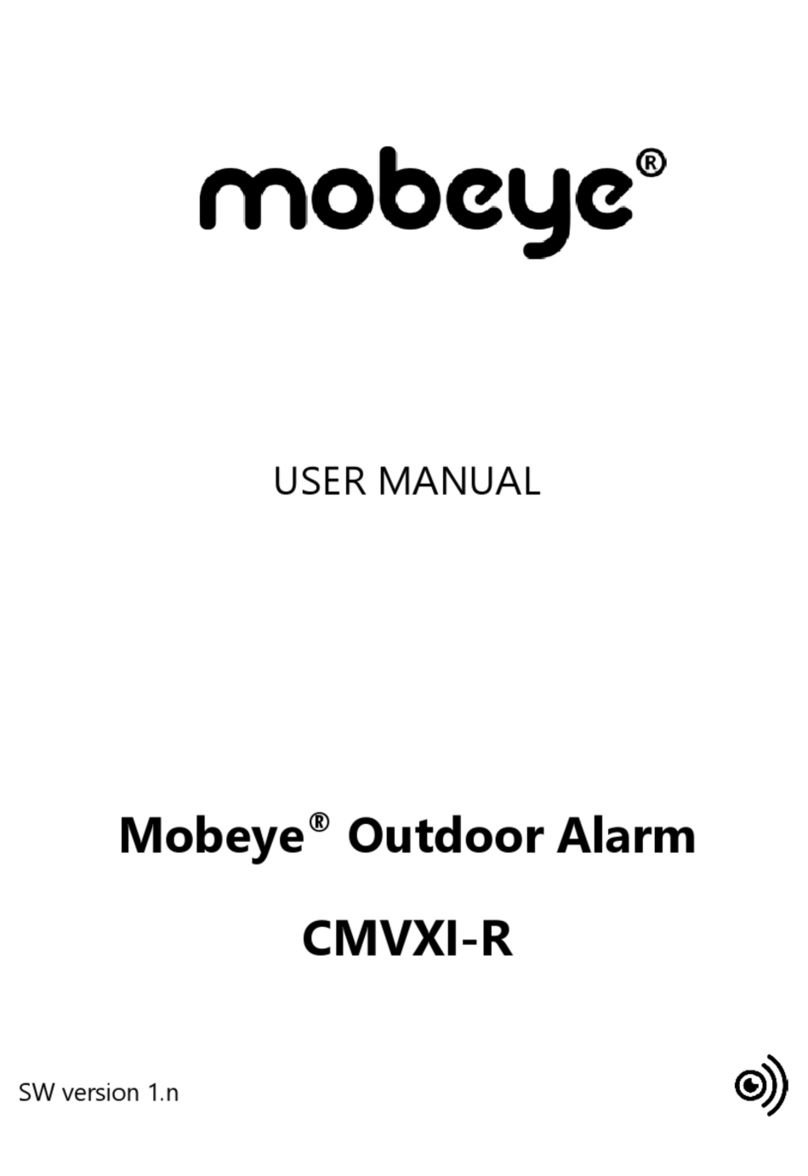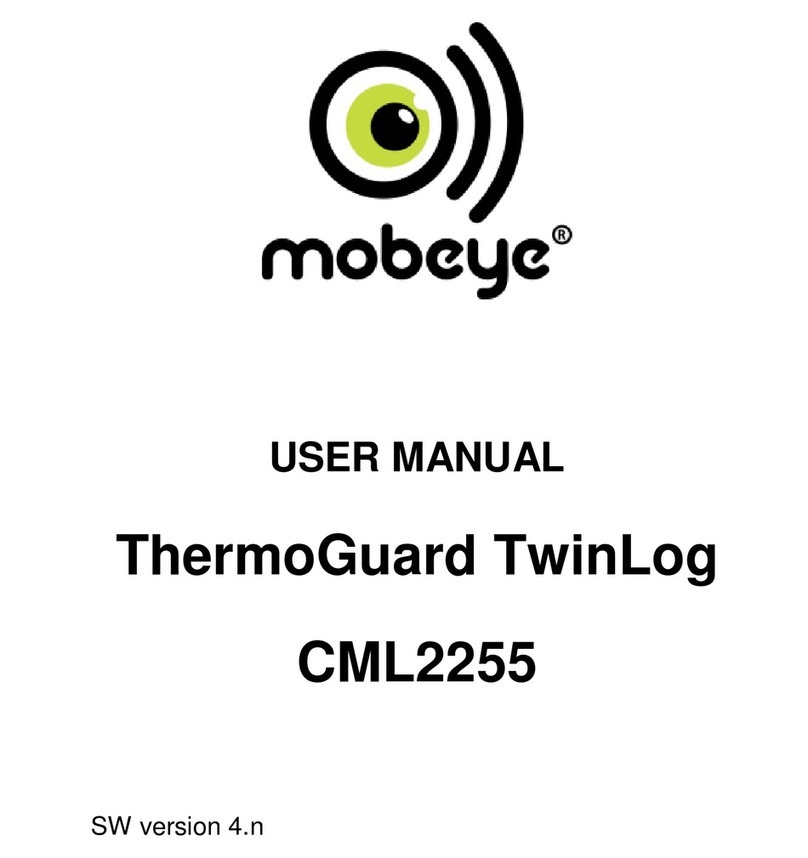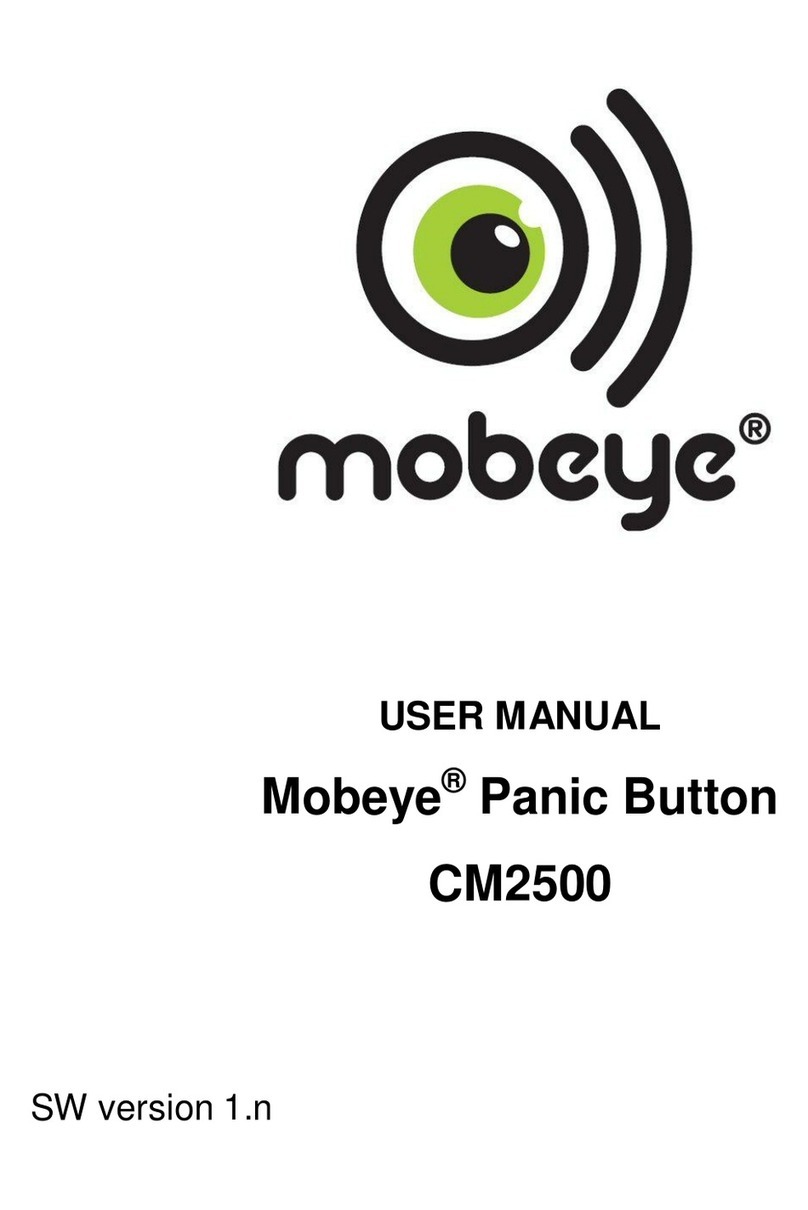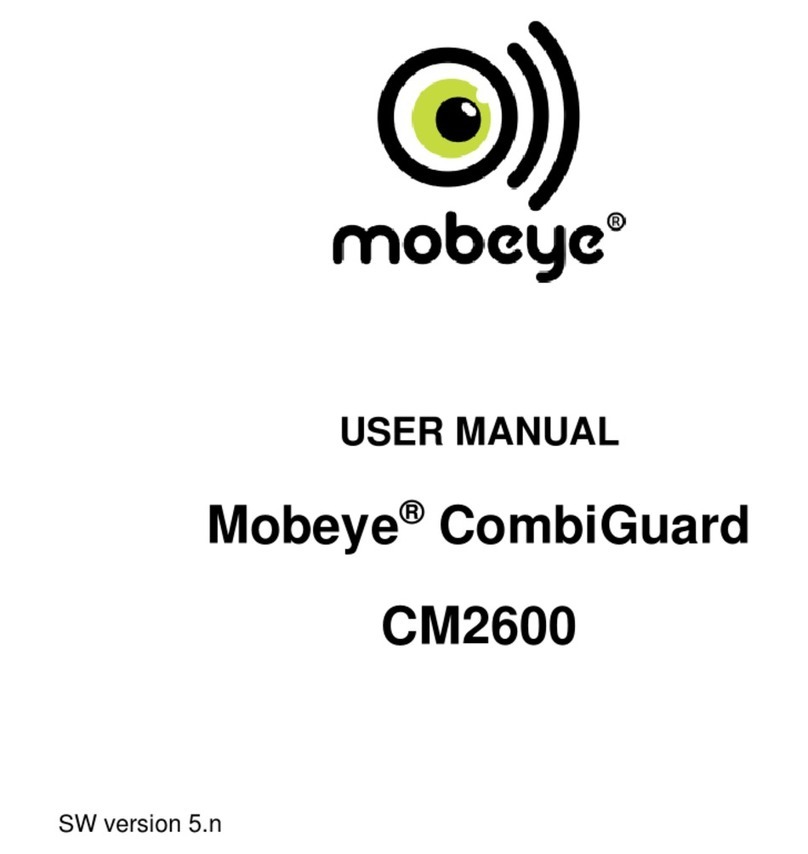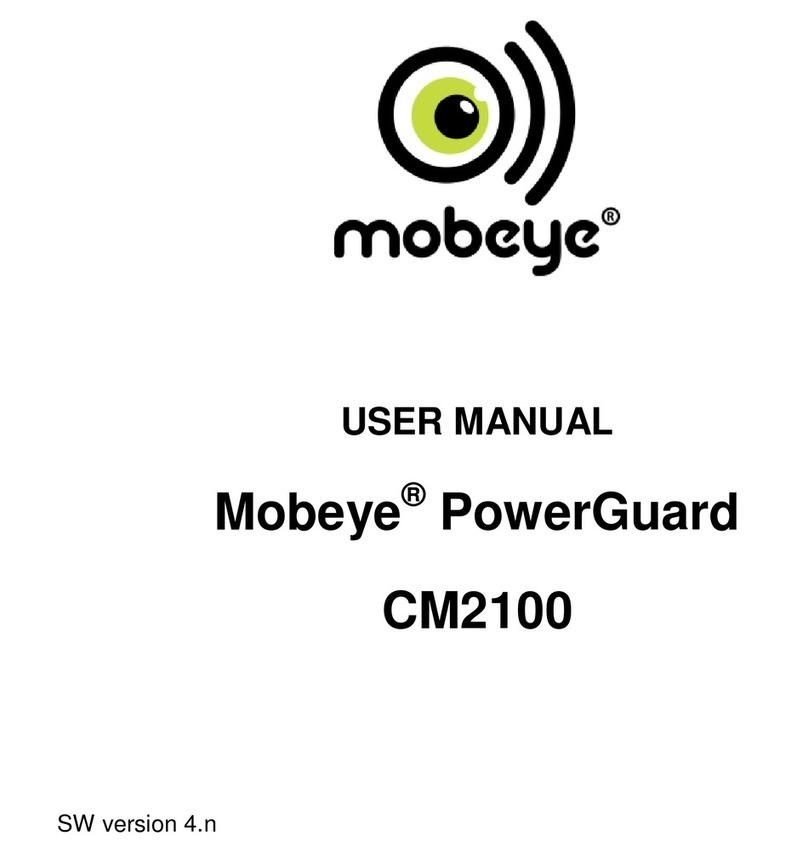7
2. STANDARD BEHAVIOUR
2.1 MOBEYE PANIC BUTTON WITH MOBEYE SIM AND INTERNET PORTAL
The Mobeye Panic Button, equipped with a Mobeye SIM card and registered on the
Mobeye Internet Portal, has the following standard behaviour as factory settings:
- In case the on/off button was pressed for at least one second, the Mobeye Panic
Button sends an alarm message to the Mobeye Internet Portal and calls the
phone numbers programmed in by the user. The Portal forwards the alarm as
text message and/or e-mail to the ‘alarm contacts’.
- In case external emergency buttons are connected to the external inputs and
these are activated, the Mobeye Panic Button sends an alarm message to the
Mobeye Internet Portal and calls the phone numbers programmed in by the user.
The Portal forwards the alarm as text message and/or e-mail to the ‘alarm
contacts’.
- When an external power supply is used and a power failure occurs, the Mobeye
Panic Button sends a ‘power failure’ message to Mobeye Internet Portal, to be
forwarded to the ‘alarm contacts’. When the power is restored, the Mobeye Panic
Button sends a ‘power restored’ message.
- When one of the inputs remain in the alarm status, the Mobeye Panic Button
repeats sending the alarm message via the Mobeye Internet Portal every four
hours.
- When the batteries need to be replaced, the Mobeye Panic Button sends a ‘low
battery’ message to the Mobeye Internet Portal. The portal forwards this to the
‘service’ contacts.
- The unit will send test messages to the portal as communication check (default:
every 7 days). If these are not received in time, the portal sends an exception
message to the ‘service’ contacts.
Chapter 5 describes how to influence the standard behaviour.
As described, the Mobeye Panic Button will, in addition to calling in the event of an
alarm, send various messages to the Mobeye Internet Portal. This is done via data
traffic where possible. As a fallback, the alarm messages are sent to the portal via
